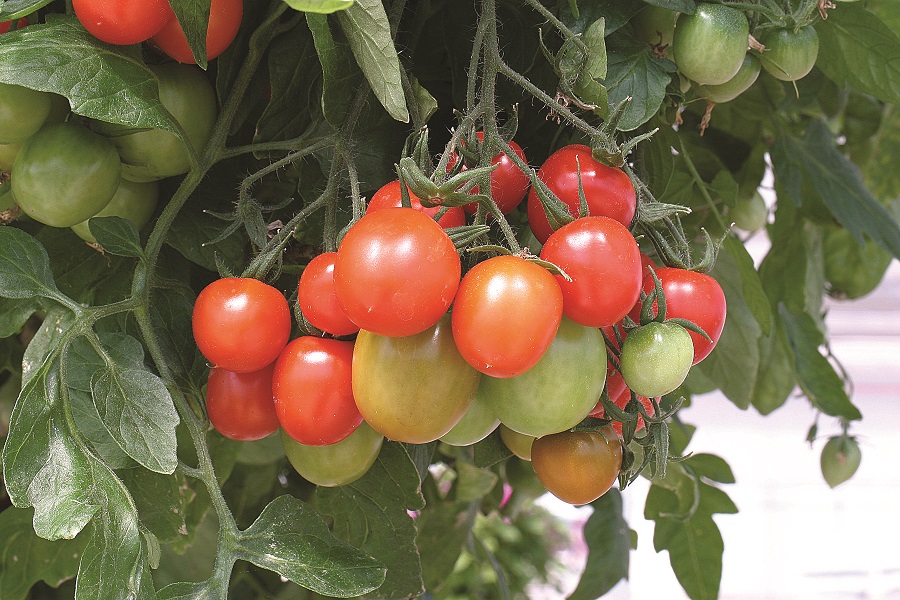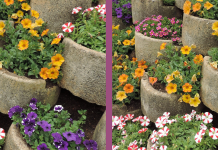Growing you own veggies has always been a great idea, and now more than ever.
Covid-19 has given new impetus to growing our own food. Eating fresh greens naturally strengthens the immune system and means fewer visits to the supermarket (reducing the risk of exposure). Plus, it puts food on the table for minimal cost … you can satisfy a family’s need for vegetables with a veggie garden the size of a door (1m wide by 3m long). Starting small makes veggie growing more manageable. Grow veggies in pots or plant boxes on the balcony, patio or kitchen courtyard. Plant them among flowers in the garden or make your own veggie patch in a sunny space.
What veggies want …
• At least six hours of sunshine, especially in winter. In summer, morning sun and afternoon shade is best.
• Fertile, well composted soil that drains well, or good quality potting mix with added compost and controlled release organic fertilizer for pot-grown veggies.
• Shelter from draughts or wind, which dry out or chill plants.
• A level site, although a slight slope helps with drainage.
What you need …
• Buy-in from the family. Ask them what they’d like to eat. That’s what you need to grow!
• Enough time … to give daily attention to the food garden, preferably five minutes a day rather than 15 minutes once a week. There’s a saying: ‘In order to live off a garden you practically have to live in it’.
• Money to buy seed or seedlings, compost, (if you don’t make your own), fertilizer, pesticides (organic or chemical), and tools.
• Basic tools: a spade, fork, rake, watering can and hose.
HEALTHY SOIL GROWS HEALTHY VEGGIES

Most garden soils lack the balance of nutrients required for good growth. For a productive veggie garden, make healthy soil a priority. Regularly enrich it by digging in compost and organic fertilizer, grow green manures and practice companion planting by pairing beneficial herbs and veggies, like basil and tomatoes, thyme and cabbage, oregano and carrots.
Seed or seedlings?
Sowing from seed is the most affordable way to garden. A single packet can yield two or three successive crops, possibly even for the following year. Most seeds germinate within seven to 14 days and are ready for thinning out and transplanting within another three to four weeks. Root veggies are best sown direct into the soil, leafy and fruiting veggies into seed trays.
Seedling packs are for gardeners in a hurry (like most of us). They’re more expensive but if you miss the sowing window, seedlings allow you to play catch-up. With seedlings there isn’t the hassle of germination failure, thinning out or wondering when to transplant. There’s also less chance of overplanting. However, there’s less variety than you’ll find in seed packets, although many heirloom varieties are now available as seedlings.
Patio veggies … these are compact varieties bred for growing in pots, or small spaces, allowing more plants to fit into less space. The winter range includes Simply Salad mixes of leaf lettuce and Asian greens, as well as Kale Storm, a compact curly-leaved variety and Wonder Wok, a mix of Asian greens.
For summer there’s a wide range of tomatoes, zucchini Easy Pick, butternut Honeynut, jalapeno chilli La Bomba, hot and sweet pot peppers, eggplant Patio Baby and cucumber Patio Snacker, as well as Simply Herbs rosemary, oregano and thyme.
Plants are available in pots from garden centres or seed can be ordered online.
Details: gropak.co.za
TIPS FOR CONTAINER VEGGIES

• Use containers with drainage holes, and which are also deep and wide enough to accommodate the roots and growth of the mature vegetable.
• Use the best possible potting soil, enriched with compost and topped with mulch.
• Foliar feed or drench the soil with a liquid fertilizer at least once a month because vegetables are heavy feeders.
• Replace the soil every two years.
• Water pots two to three times a week in winter and every day in summer.
Ready, steady … plant
Winter veggies that can be planted out as seedlings are kale, tatsoi, mizuna, pak choi, giant red mustard, Red Frills mustard, Green in Snow mustard, cabbage, garden peas, rocket, Swiss chard and spinach. Protect seedlings with frost cloth overnight.
Sow summer fruiting crops like tomatoes, brinjals, sweet peppers, squash and beans indoors in seed trays or pots, under warm, controlled conditions. By the end of September seedlings will be ready for planting out.
Sowing calendar at a glance
Spring vegetables (August – Sept sowing)
Bush beans, beetroot, carrots, cabbage, lettuce, garden peas, Swiss chard.
Summer vegetables (end Sept – Nov sowing)
Tomatoes, brinjals, bush and runner beans, cucumber, baby marrow, sweet pepper, chillies, summer squash, sweet corn, pumpkin.
Autumn vegetables (Dec/Jan – March sowing)
Bush and runner beans, broccoli, Brussels sprouts, cabbage, cauliflower, celery, carrots, beetroot, lettuce, Swiss chard.
Winter vegetables (end Feb – May sowing)
Cabbage, cauliflower, broccoli, cauliflower, Brussels sprouts, broad beans, kale, lettuce, radish, Swiss chard and spinach.
Text: Alice Coetzee






